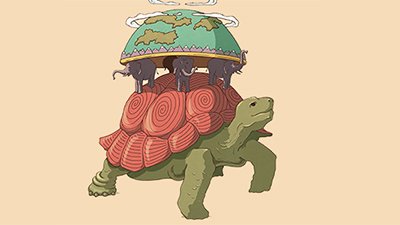
Perfect Cosmic Constants
Space.com: “New Physics? Fundamental Cosmic Constant Now Seems Shifty” Two weeks ago, we looked at the argument—and responses to it—that certain cosmological constants are perfectly “fine tuned” for life, thus proving the existence of an intelligent designer. Now comes another rebuttal.
Researchers at the University of New South Wales poring over astronomy data have come to a new view on the issue of cosmological constants in the universe: simply put, they may not be so constant. If that’s true, does it doom the argument that key physical constants are “just right” for life?
The fine-structure constant, usually denoted alpha, indicates the strength of the electromagnetic force. Astrophysicist John Webb’s team, using data from the Keck Observatory and the Very Large Telescope, looked closely at distant galaxies and found that in one direction away from earth, alpha seemed to grow larger the farther they looked; in the other direction, alpha grew smaller and smaller.
Astronomers had noted some variation in alpha before, but the unique contribution of Webb’s team was looking in two directions and comparing results. Previous studies that found variation in alpha could not discern whether that variation occurred in space (as one moved farther from earth) or in time (since the light we observe represents some degree of astronomic history). If the variation were only due to time, however, alpha would fluctuate identically as one looked in any direction.
“When you look in one direction, you cannot distinguish between variation in space and variation in time,” explained team member Victor Flambaum. “Now there is nearly complete coverage of the sky. The conclusion is: it’s a variation in space, not in time.”
Some remain skeptical of the results, which have not yet been published in a peer-reviewed journal. “If history is a guide—and often it is not—the results of Webb et al. will turn out to be untenable,” said University of Aarhus science historian Helge Kragh, an expert on this research question.
But if confirmed, what do the results say about the origin of life on earth—and the so-called anthropic principle, which leverages the “just right” nature of such constants to argue for an intelligent designer? Flambaum called the question “a puzzle,” while Space.com deemed it a “major conundrum” that “seemed like too much of a coincidence.”
“Now we have an explanation. If fundamental constants vary in space, we just appear in the area of the universe where constants are good for us,” Flambaum explained. In other regions of the universe where alpha is different, life may never exist.
So far it’s “only” our region of the universe that is “just right” for life—and that only adds to the argument that life on earth was not a natural accident but the result of divine, supernatural creation.
The researchers may think this puzzle has been solved, but even if their study results stand, their answer to the puzzle doesn’t. After all, so far it’s “only” our region of the universe that is “just right” for life—and that only adds to the argument that life on earth was not a natural accident but the result of divine, supernatural creation.
For more information:
- Do Creationists Believe in “Weird” Physics like Relativity, Quantum Mechanics, and String Theory?
- Get Answers: Astrophysics
Remember, if you see a news story that might merit some attention, let us know about it! (Note: if the story originates from the Associated Press, Fox News, MSNBC, the New York Times, or another major national media outlet, we will most likely have already heard about it.) And thanks to all of our readers who have submitted great news tips to us.
(Please note that links will take you directly to the source. Answers in Genesis is not responsible for content on the websites to which we refer. For more information, please see our Privacy Policy.)

Answers in Genesis is an apologetics ministry, dedicated to helping Christians defend their faith and proclaim the good news of Jesus Christ.
- Customer Service 800.778.3390
- Available Monday–Friday | 9 AM–5 PM ET
- © 2025 Answers in Genesis



